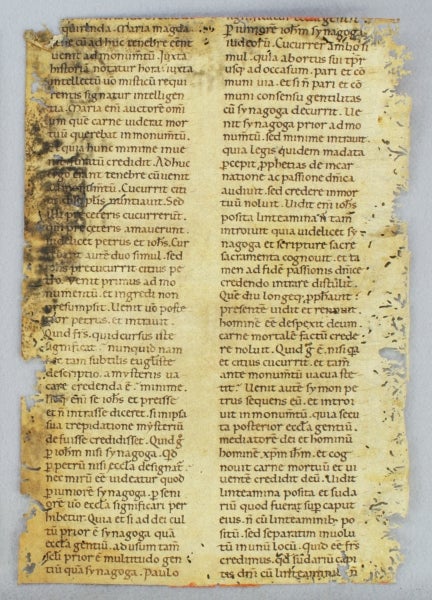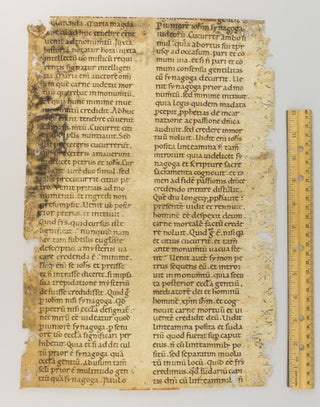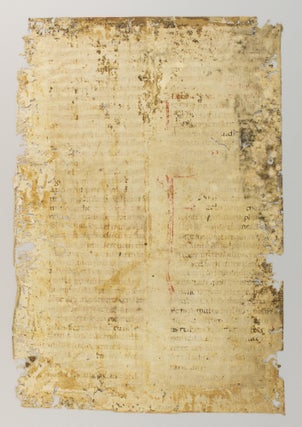TEXT FROM HOMILY XXII, FOR EASTER SUNDAY.
(Italy, ca. 1150). 406 x 273 mm. (16 x 10 3/4"). Double column, 42 lines in a fine rounded early proto-gothic hand.
With rubrics in red, one three-line initial "I," and A PANELLED 13-LINE INITIAL "F" (all of these on the very faded recto and, consequently, indistinct). ◆Formerly used in a binding, with text on the recto unreadable, the verso with a narrow band of darkening along one edge (not obscuring text), edges very wormed (but 90 percent of the worming in the margin, with very little damage to the text); some obvious condition problems, but the large and beautiful script on one of the sides entirely legible and certainly very pleasing.
This leaf comes from a very large copy of one of the major texts by one of the great popes of the early Middle Ages, and it is notable for the spaciousness and elegance of its script. The sermon here is based on the Gospel reading for Easter Sunday, John 20:1-9, which reports Mary Magdalene's discovery of the empty tomb and her running to tell the apostles what she had--and hadn't--found. Given the fact that the passage under discussion celebrates the most critical event in Christianity, the opening phrase ("Fractus longa molestia stomachus") is unexpected (who would have thought it appropriate to mention protracted gastrointestinal problems?) and probably more effective as a result. Gregory says he is so weakened that he had given up explaining the Gospel to his flock, but now he must resume. He recounts how Mary Magdalene told John and Peter about the empty tomb, how John arrived first but did not enter the sepulcher, and how Peter, the tardier one, did. Gregory then gives an allegorical interpretation of this episode: John, he says, represents the Synagogue, Peter the Church; the Jews were prior to the Christians, but they hesitated on the brink of belief in the Son of God, while the Christians entered into full belief. (ST12083f)
Price: $1,800.00



